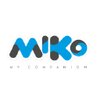Senior Mechanical Design Engineer
10+ Senior Mechanical Design Engineer Interview Questions and Answers

Asked in Bajaj Electricals

Q. How much I know about plastic design? Mould flow analysis?
I have extensive knowledge and experience in plastic design and mold flow analysis.
I have worked on numerous projects involving plastic components and assemblies
I am proficient in using CAD software for designing plastic parts
I have conducted mold flow analysis to optimize part design and manufacturing process
I am familiar with different types of plastics and their properties
I have experience in designing for injection molding, blow molding, and thermoforming processes

Asked in Enphase Energy

Q. How do you select a heatsink and fan?
Heatsink and fan selection involves considering thermal requirements, size constraints, airflow needs, noise levels, and cost.
Consider the thermal requirements of the component being cooled
Take into account size constraints of the system
Evaluate airflow needs based on heat dissipation
Consider noise levels and select a fan with appropriate noise rating
Balance performance requirements with cost constraints
Examples: Selecting a larger heatsink for higher power components, choosi...read more
Senior Mechanical Design Engineer Interview Questions and Answers for Freshers
Asked in METRO PRECISION AEROSPACE

Q. Strength based design calculations for steel
Strength based design calculations for steel involve determining the maximum load a steel structure can withstand before failure.
Calculate the maximum stress the steel can handle using the material's yield strength
Consider factors such as safety margins, load distribution, and environmental conditions
Use appropriate design codes and standards for steel structures, such as AISC or Eurocode
Perform finite element analysis to simulate the behavior of the structure under different...read more

Asked in TYPSA

Q. What do you know about systems?
Systems are interconnected components working together to achieve a common goal.
Systems consist of interconnected parts or components
These parts work together to achieve a common goal or function
Systems can be mechanical, electrical, biological, etc.
Examples include HVAC systems, computer systems, and the human body
Asked in Vt Corp

Q. Future plan in terms of learning
I plan to continue learning and staying up-to-date with the latest technologies and advancements in the field.
Attending industry conferences and seminars
Taking online courses and certifications
Reading industry publications and research papers
Collaborating with colleagues and experts in the field

Asked in Ashok Leyland

Q. Explain the product life cycle.
Product life cycle refers to the stages a product goes through from introduction to withdrawal from the market.
Introduction stage - product is launched into the market
Growth stage - sales and profits increase as product gains popularity
Maturity stage - sales peak and competition increases
Decline stage - sales decrease and product may be discontinued
Examples: iPhone (introduction), Coca-Cola (maturity), VHS tapes (decline)
Senior Mechanical Design Engineer Jobs



Asked in Shriconst Formwork

Q. Material selection process
Material selection process involves evaluating properties, cost, availability, and performance requirements.
Identify performance requirements such as strength, durability, and thermal conductivity
Consider cost and availability of materials
Evaluate properties like corrosion resistance, weight, and thermal expansion
Select materials based on compatibility with manufacturing processes and environmental factors
Examples: Steel for high strength applications, aluminum for lightweigh...read more

Asked in UNO Minda

Q. What is brass?
Brass is a metal alloy made of copper and zinc.
Brass is commonly used in musical instruments, plumbing fixtures, and decorative items.
It has a yellowish-gold color and is corrosion-resistant.
The proportion of copper and zinc can vary to create different types of brass with varying properties.
Brass can be easily machined and cast.
It has a lower melting point than steel and is a good conductor of heat and electricity.
Share interview questions and help millions of jobseekers 🌟

Asked in METRO PRECISION AEROSPACE

Q. Heat treatments for SS420
Heat treatments for SS420 involve processes like annealing, tempering, and hardening to achieve desired mechanical properties.
Annealing: Heating SS420 to a specific temperature and then slowly cooling it to relieve internal stresses and improve ductility.
Tempering: Reheating SS420 after hardening to reduce brittleness and increase toughness.
Hardening: Heating SS420 to a high temperature and then rapidly cooling it to increase hardness and strength.
Precipitation Hardening: Agi...read more
Asked in Vt Corp

Q. Long term plan about future
My long term plan is to continuously learn and grow in my field while contributing to the success of the company.
Continuously improve my skills and knowledge through training and self-study
Take on challenging projects and responsibilities to expand my experience
Collaborate with colleagues and share knowledge to contribute to the success of the company
Explore opportunities for leadership and mentorship roles
Stay up-to-date with industry trends and advancements

Asked in Neolite Zkw Lightings

Q. Design practical test creo
The practical test in Creo involves designing a mechanical component or system using the software.
Understand the design requirements and constraints before starting the project.
Utilize the various tools and features in Creo to create a detailed and accurate design.
Ensure that the design is feasible for manufacturing and assembly.
Consider factors such as material selection, tolerances, and functionality in the design process.
Iterate on the design based on feedback and make nec...read more
Asked in Borosil Scientific

Q. General design principles
General design principles are fundamental guidelines that help ensure the effectiveness and efficiency of a design.
Consider the user's needs and preferences
Simplify complex systems for ease of use
Ensure safety and reliability
Optimize for cost and manufacturability
Iterate and test designs for continuous improvement

Asked in Jord International

Q. ASME SEC VIII DIV 1
ASME SEC VIII DIV 1 is a code for designing pressure vessels.
ASME SEC VIII DIV 1 is a code for designing pressure vessels that are subject to internal or external pressure.
It provides guidelines for the design, fabrication, inspection, testing, and certification of pressure vessels.
The code covers a wide range of pressure vessels, including tanks, reactors, heat exchangers, and boilers.
It specifies the materials, design criteria, and testing requirements for pressure vessels....read more

Asked in UNO Minda

Q. Define least count.
Least count is the smallest measurement that can be taken by a measuring instrument.
It is the smallest value that can be measured by an instrument.
It is determined by the precision of the instrument.
For example, a ruler with a least count of 1 mm can measure up to the nearest millimeter.
It is important to consider the least count when selecting an instrument for a specific measurement task.
Interview Questions of Similar Designations
Interview Experiences of Popular Companies








Reviews
Interviews
Salaries
Users

















